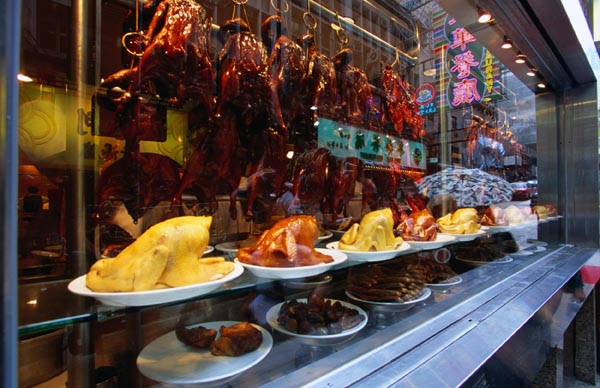
Cooked birds in the shopfront of a Hong Kong restaurant. (Photo provided to China Daily)
When she writes about soy sauce, for example, she explains how it's made from fermented soybeans, wheat flour, water and salt; how it's used in the kitchen; the differences between light and dark versions. But then she grabs the readers hand for a joyous jaunt to the Kowloon Soy factory in Yuen Long, where the company still dries its fermented soybean culture the traditional way-by loading everything into massive clay vats and letting the sun do its job.
Owner Ken Wong, who is part of the original family that founded the brand, concedes that it takes three or four months to make soy sauce this way, as opposed to the much quicker chemical process many competitors use today.
"A lot of the time, we cannot produce enough to match demand," he says. "And when it's raining, our numbers are affected." But the resulting product, he insists, tastes and smells better than the more industrially made sauces.
The book is peppered with visits to similar inheritors of Hong Kong's culinary crafts, and readers can follow the author through the steps of making oyster sauce and proper shrimp paste-and blending older and newly harvested rice to produce a bowl with the perfect texture.
Wong also uses her dining columnist experience to take us around the city's restaurant scene. We learn that the bing sutt ("ice room") diners were offering cold drinks in pre-refrigeration days when such beverages were a luxury, while cha chaan teng ("tea restaurant") evolved as a more sophisticated version of the hawker stall. Today both serve similar menus of Western-influenced yet Cantonese-style snacks and dishes. The Western influence, of course, dates from the British colonial period after World War II, long before hipster foodies were talking about fusion. Breakfast options include sandwiches filled with scrambled eggs and either ham, spam or minced beef-or instant noodles dunked in satay beef broth.


















































